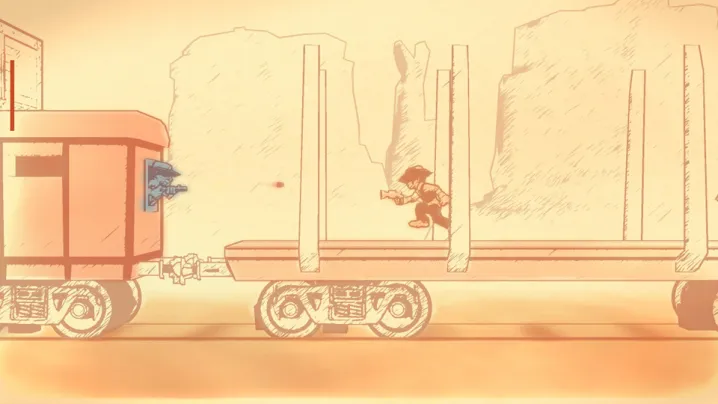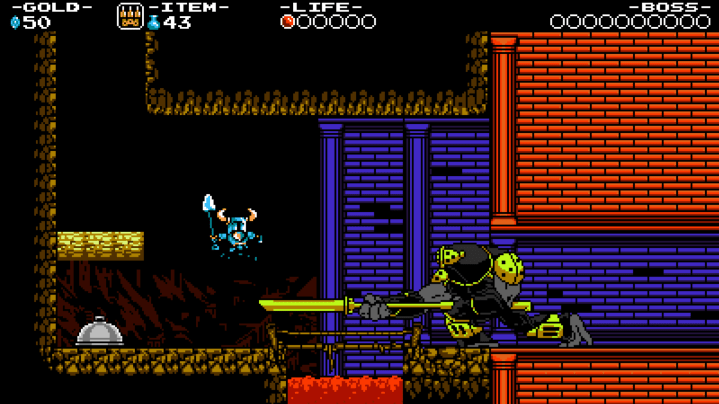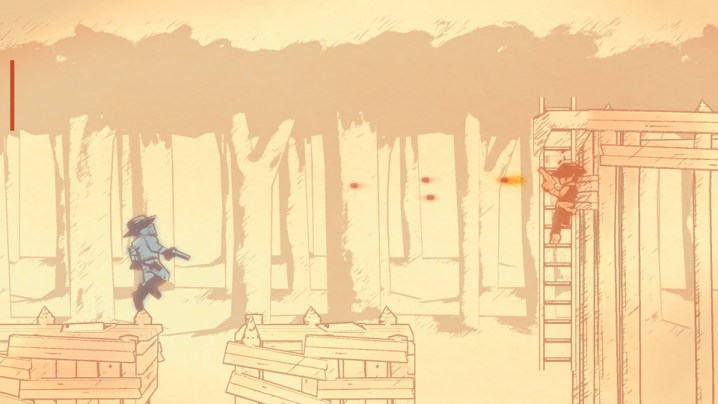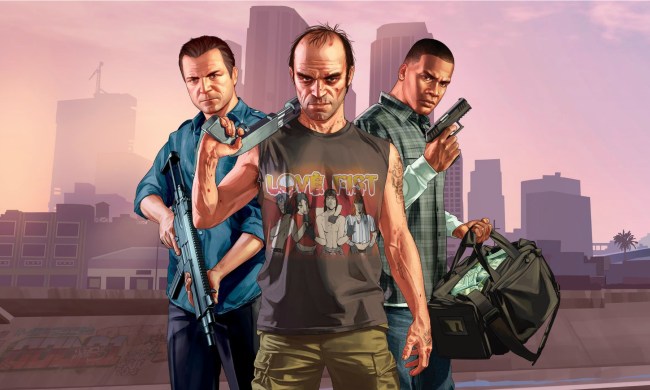The 3DS eShop is no longer allowing Nintendo fans to make new game purchases, marking the end of a long era of DS-branded handhelds. Not only that, but it’s also sunsetting a vibrant indie community in the process. After helping smaller developers break through with WiiWare and DSiWare, the 3DS eShop was where indies really started to flourish on Nintendo consoles. Multiple games and developers built success stories on the platform, starting series that are still recognized in the eyes of Nintendo fans and stand as some of the 3DS’ most iconic games.
Within a year of the eShop’s launch, WayForward’s Mighty Switch Force provided one of the system’s best 3D experiences, Renegade Kid’s Mutant Mudd showed the potential of a platformer where players can hop between the foreground and background, and Hörberg Productions’ Gunman Clive provided a short, sweet, and cheap throwback platformer experience with lots of styles. By 2014, Yacht Club Games’ Shovel Knight had cemented itself as one of the best indie games of all time on the 3DS. Titles like that gave the 3DS a reputation as a haven for smaller developers. a platform where they could break out of a niche and connect with a larger audience.
When reflecting on the end of the 3DS era in interviews with Digital Trends, the developers of these games made it clear that the 3DS eShop served as a launchpad for the start of a golden age for Nintendo indies and that, even now, Nintendo could stand to learn something from how it treated indies on the now-defunct digital storefront.
Why 3DS?
While the Nintendo 3DS would become a thriving home for intendent creators by the end of its life span, that wasn’t always the case. It’s no secret that the earliest days of the handheld’s life were rough; the eShop itself didn’t even exist until June 2011, a few months after the system released. As Gunman Clive creator Bertil Hörberg points out, 3DS also wasn’t the easiest system to bring games to.
“With the 3DS being a very specialized piece of hardware with a comparatively slow CPU, there was no support for big middleware engines like Unity or Unreal, making it impossible for most indies to bring over their games,” Hörberg tells Digital Trends.

Despite those issues, within a year of the eShop launch, games such as Mighty Switch Force, Mutant Mudds, and Gunman Clive had all made a name for themselves as prominent 3DS indies. WayForward, Renegade Kid, and Hörberg Productions — the respective developers behind those games — took a major risk by releasing games on the 3DS eShop early on. Why bother with that when there were much easier systems to work with at the time? Everyone I spoke to referenced their love for Nintendo as an encouraging factor to make games for the system. For WayForward and Renegade Kid, they say that it was a no-brainer evolution of relationships started on previous Nintendo platforms.
It was a bit more of a risk for Hörberg, who didn’t have any previous experience working with Nintendo and didn’t have much data on how 3DS indies performed on the eShop. In fact, Gunman Clive, a simple 2D platformer with a distinct sketch-like art style, originated as a mobile game.
“The first Gunman Clive was originally released on smartphones, but that’s never been a preferred gaming platform for me,” Hörberg explains. “I’ve always had a love for Nintendo handhelds, so after some moderate success on mobile, I felt confident enough to apply to become a licensed Nintendo developer back when they were a bit more stingy about who was able to get devkits. Initially, I wasn’t sure if Gunman Clive would work on 3DS … but all of those concerns were quickly erased as I started working on the port, and the game ran beautifully on the little handheld.”
Each pixel in the game was one pixel on the screen.
Yacht Club Games lagged a bit behind these other teams, bringing Shovel Knight to Kickstarter in 2013 before releasing it on Wii U and 3DS in June 2014. Yacht Club’s founders had spun off from WayForward (some even worked on Mighty Switch Force), but still took a calculated risk prioritizing 3DS and Wii U instead of PlayStation 4 and Xbox One. What was the biggest draw to working on 3DS? Yacht Club’s resident artmancer Nick Wozniak tells Digital Trends it was to make a game in stereoscopic 3D and lower resolution.
“Putting the gameplay right on the screen and having all the 3D effects happen in the distance allowed us to explore the virtual space while keeping the gameplay uncluttered,” Wozniak tells Digital Trends. “The platform gave us a unique opportunity to put the game out at the exact resolution we built it in. Each pixel in the game was one pixel on the screen, resulting in very crisp visuals.”

Developers also referenced features like second screen-enabled menus and StreetPass as significant draws for 3DS. For many, the handheld was the right platform at the right time. Just as indies were becoming a permanent fixture in the game industry, developers were drawn to working with a company they loved and making a game for a platform that didn’t function like anything else. The 3DS eShop provided the perfect hub for that.
“The 3DS is a really good example of how Nintendo tends to create hardware platforms that introduce more fun ways for players to interact with our games, and we are all about it,” Wozniak explains. “Any time a first-party platform introduces a fun feature or silly interaction with their hardware, you can count on us jumping at the chance to exploit it in some way.”
Thinking in 3D
Of course, once developers decided they wanted to bring a game to 3DS, they then had to make the game. While the handheld’s unique 3D capabilities wereenticing, they also presented unique technical challenges that Wozniak says would lead “to some unforeseen headaches, sometimes literal headaches.” Developing games for unique hardware clearly is a draw for many talented indie developers, but it also means developers must account for problems they might not have found elsewhere.
“Initially, I wasn’t sure if Gunman Clive would work on 3DS because of its fixed-function shader system; I also wasn’t sure if the style would work on the lower-resolution screen or if stereoscopic 3D would make sense for that style,” Hörberg says. Thankfully, Hörberg discovered he didn’t have to worry about those issues once he started working on the port, but sometimes teams would go too far and have to reel things back when working on 3DS.
WayForward founder (and self-prescribed “Tyrannical Overlord”) Voldi Way tells Digital Trends that Mighty Switch Force was originally only playable in 3D and that Nintendo had to intervene to stop that. “Nintendo reminded us that some people can’t see stereoscopically, so we made it optional, which in turn made the game more accessible,” Way says.

Wozniak also ran into design challenges and spoke about how optimizing for 3DS performance shaped the look of some areas of Shovel Knight.
“The 3DS is not as powerful as some of the other platforms that we released the game on, which made it more difficult to optimize the game’s performance on that platform,” Wozniak explained. “We had to be very careful about what was being loaded into the 3DS’ VRAM, as we didn’t want to exceed its capacity and cause the game to crash. This meant that we had to make some compromises, such as using flat images instead of more complex 3D backgrounds in certain areas of the game. Most notably, the end of Iron Whale has a big Vault in the background. If you’ve ever thought, “Hey, why is this so flat compared to the rest of the level?” — well, there’s the answer!’
Game development is not easy, and that was doubly true for these smaller independent teams trying to make games in 3D for a handheld that ran and displayed games differently than any other platform on the market. But when teams could pull it off, the satisfaction was worth the effort.

“[3D] was especially potent for 2D games, ironically, because placing discrete 2D layers at different 3D depths presented a very clear and digestible stereoscopic 3D effect,” Renegade Kid and Atooi co-founder Jools Watsham tells Digital Trends. “The 3DS was also a lot more powerful than the DS in terms of how many polygons could be displayed on the screen, and it also offered some nice effects like texture shaders to play with. We had a great time making new games for the 3DS.”
Finding success
By the time they were all released, games like Mighty Switch Force, Mutant Mudds, Gunman Clive, and Shovel Knight all felt uniquely tailored and most enjoyably played on 3DS. They were viral successes on the eShop, and all led to notable indie series that even have some presence on Nintendo Switch. What was the secret to that success? Surprisingly, many of the developers had similar answers. Hörberg, Way, and Watsham all at least partially credit being early indie games on the eShop as a fundamental reason.
“We released Mighty Switch Force fairly close to the launch of the 3DS eShop itself, so there was a lot of interest in new, original, downloadable games,” Way says. “Additionally, it was designed specifically for the Nintendo 3DS, with play mechanics that took advantage of the hardware’s unique features and was made as a love letter to the system.”

Another thing these games have in common is genre: all four games are action platformers. While Nintendo is known for 2D platformers, there weren’t many first-party platformers on the 3DS in its early years. That put eShop indies that embraced that classic genre ahead of games like New Super Mario Bros. 2 and Kirby Triple Deluxe and made them all the more appealing to early adopters. All of these games are well-designed too, with many pushing the genre forward by cleverly incorporating 3D.
“The ability to jump between the foreground and background layers in 3D is a very fun concept, especially for the 3DS with its stereoscopic 3D,” Watsham said of Mutant Mudds’ main gameplay hook. “That idea excites the mind and makes players curious to check it out for themselves. Mutant Mudds was one of the first full-on action platformers available on the eShop at the time, which meant the demand for such an experience was very high.”
Indie games can give a platform’s game lineup life when first-party support is suffering. Gunman Clive, in particular, also had the advantage of being extremely cheap. When it launched on 3DS, it was just $2 — a price point it kept until the eShop closed. Hörberg goes as far as to say thatthey “got lucky” with Gunman Clive because of its price and release window.
“The eShop had only launched one-and-a-half years before and was still rather empty, and keeping the same price point as the smartphone version made Gunman Clive one of the cheapest proper games on the system,” Hörberg says. “Even though it launched with little fanfare and modest initial figures, it just kept on selling throughout the entire 3DS life cycle. Of course, the game itself was also a much better fit for the 3DS system and the Nintendo audience than for the smartphone market.”

These indies were all able to embrace a platform’s digital storefront at a time when it wasn’t overcrowded, and that set a precedent. When titles with a lot of prebuilt hype, like Shovel Knight, arrived, they also got to build off of the platform’s own narrative as a home for great hidden gems. It was a golden age for indies on Nintendo platforms, and it was enabled by an eShop the players are officially no longer able to purchase games from.
The 3DS eShop’s legacy
The 3DS eShop wasn’t perfect. It could be slow to navigate, had a lot of clunky menus when purchasing and downloading games, and didn’t display updates and DLC as well as it could have. That’s something Yacht Club Games had to deal with as it had to compress lots of DLC campaigns and modes for Shovel Knight on 3DS until 2019. Still, these games had some initial success on the eShop and stayed relevant there throughout the storefront’s entire life span. It’s a style of viral indie that we don’t see as often on a platform like Nintendo Switch. That’s something the developers I spoke to sorely miss.
“There seemed to be a large desire for Nintendo and the 3DS eShop team to support and promote indie games and indie studios on the 3DS and the Wii U,” Jools Watsham says. “It doesn’t feel as though that same indie initiative continued over to the Switch, unfortunately.”
I do think Nintendo was better at highlighting different games on its older systems.
While Nintendo was picky about Switch indie games during the system’s first year on the market, the current Switch eShop is notoriously crowded with a ton of indie games of varying quality and few good ways to sort them. To Way, this is a double-edged sword. “They were also a bit more selective about what got published on the [3DS] eShop compared to most current storefronts, so by default, it provided a more curated experience,” Way explains. “Now, the gaming landscape is more inclusive, which is fantastic, but it can make it harder for those hidden treasures to catch players’ eyes.”
Surprisingly, many of the developers we spoke to all agreed on one thing the 3DS eShop did significantly better than the Nintendo Switch: categorizing content. Way highlighted specific examples of categories and promotions that helped elevate indie games like Mighty Switch Force on 3DS, such as “Games with Strong Female Leads” and “Games That Don’t Suck.” These categories were not only quirky and eye-catching, but drew players interested in specific types of titles to games that fit their personal criteria.
The Nintendo Switch has nothing like that; its most detailed searches have to do with pricing, bestsellers, games with demos, and genre, and none of those lists ever feel like they are curated quite correctly. It’s easier than ever to release an indie game on a Nintendo platform, but that also means the same factors that led to Mighty Switch Force, Mutant Mudds, Gunman Clive, and Shovel Knight’s success can’t necessarily be replicated here.
“I do think Nintendo was better at highlighting different games on its older systems,” Hörberg says. “The Switch eShop is rather bare-bones and doesn’t offer much in terms of browsing different categories or curated lists. The Discover page is very limited and usually mostly filled with first-party stuff and big releases. With the massive number of releases on Switch, it needs a lot more discovery options, but instead, most games get buried as soon as they’re released.”
Categories might seem like a simple concept, but they are one of the key ways the 3DS eShop helped appeal to, elevate, and promote indie voices as digital gaming became mainstream. Developers could adapt games made especially for the handheld and find unexpected success doing so. The 3DS eShop had its limits, but it still did a great job at giving indie developers a place to release successful smaller projects and elevating them after they did so.
The golden age of the 3DS eShop has long since passed, and after today, those who haven’t already bought these games will need to seek them out elsewhere or miss them entirely. Still, as a 3DS owner myself, I’ve grown very fond of the era that got me into both Nintendo games and a lot of standout indies. Developers feel similarly about the handheld that helped elevate them during the indie game boom of the 2010s.
Yacht Club Games’ Nick Wozniak puts it best: “The 3DS was a very special system, and Nintendo put in the effort to really make it feel that way.”




